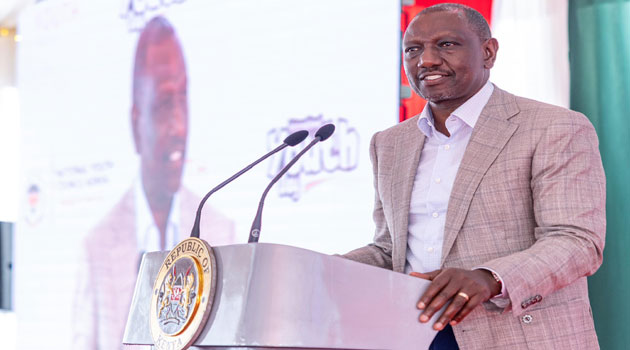
Kenya’s youth are educated, tech-savvy, socially aware—and understandably restless. Generation Z, the most educated and connected cohort in our history, is also the most frustrated. Unemployment, underemployment and a scarcity of meaningful opportunities have fed discontent that, in recent months, spilled into protests and digital-first organising. Many a university seminar now dissects how Gen Z—backed by millennials—self-organised nationwide civil disobedience that helped force the withdrawal of the Finance Bill 2024. Government had to respond. With the Nyota Fund, it finally appears to be attempting a structured answer.
Formally the National Youth Opportunities Towards Advancement (NYOTA) programme, Nyota may be the most comprehensive response to youth despondency we have seen from the Kenya Kwanza administration. Backed by the World Bank and targeting more than a million young people, the programme blends business support, access to government procurement, on-the-job experience and a push for financial discipline through savings schemes. The ambition is right: unlock talent, spread opportunity and build pathways into dignified work.
Kenya does not lack ideas; it lacks access. Young people across the country have viable concepts but are shut out by capital constraints and networks they can’t break into. Under Nyota, selected applicants receive KSh 50,000 in phased business support alongside training and mentorship. The training must be tied to real enterprise building: acceleration, market access and basic governance. Savings—such as via NSSF’s Haba Haba—should flow from profits, not from the initial grant, if the aim is sustainability rather than cosmetic compliance. Early testimonials suggest Nyota can be more than handouts; it can seed small businesses with a future.
Access to Government Procurement Opportunities (AGPO) is the potential game-changer. Public tenders should not remain the preserve of a connected urban elite. Extending procurement access to youth in remote and rural areas can stimulate local economies, create jobs where people live and build a sense of inclusion the capital city cannot supply. But AGPO will only work if processes are transparent, paperwork is simplified, and payments are timely.
Not every young person is cut out for entrepreneurship or government contracts. That is why the On-the-Job Experience (OJE) component is smart. For those pursuing formal careers, OJE offers exposure, skills and a bridge into steady employment. The target of 90,000 placements is ambitious but attainable—if the selection is merit-based and protected from nepotism and political patronage. The rule must be simple: merit over connections.
Nyota would be stronger still if it borrowed rigorously from proven models. China’s poverty-alleviation playbook offers useful lessons—less about ideology, more about method. Three features stand out. First, decisions anchored in data: mapping local resources, human capital and market demand to identify which enterprises can actually thrive in each region. Secondly, targeted training matched to those opportunities rather than generic workshops. Thirdly, blended finance: grants for working capital to stabilise operations, paired with loans for assets and expansion to enforce discipline and scale. Such research-driven targeting would direct investment away from funding thousands of similar, marginal micro-ventures and towards youth-led enterprises that are genuinely viable—and able to hire others.
The point is to build systems, not merely to celebrate “hustle”. Grants can steady a young enterprise; loans tied to performance can grow it. Some young people will not be natural founders, and that’s fine. They can be placed in structured, professionally run ventures with clear targets and accountability. Done this way, Nyota creates employment engines—not just one-off success stories for social media.
For President Ruto, Nyota is more than a youth programme; it is an opportunity to reset a governing agenda. Done well, it can convert today’s aggrieved youth into tomorrow’s job creators, taxpayers and civic leaders. Done poorly, it will be remembered as yet another promise buried under bureaucracy, capture and delay.
Delivery will make the difference. Transparency, speed and reach will decide whether Nyota lives up to its name. Within about a year, Kenyans should be able to see ripple effects: trading kiosks formalised, village-level enterprises supplying schools and clinics, young technicians completing apprenticeships, prompt AGPO payments hitting rural accounts. The real test is geographic justice: will youths in far-flung places like Nyikendo in Suna East benefit as readily as those in Nairobi or Nakuru? Will application windows be public and fair—or quietly fenced off for the politically privileged?
Kenyans are watching. If Kenya Kwanza is serious about bottom-up economic transformation, Nyota is the vehicle. Now it must be driven with vision, fairness and integrity—by men and women who see the bigger picture and resist expediency. Give young Kenyans a transparent ladder to opportunity and they will climb. Keep moving the rungs, and they will push back.
[Dr. Hesbon Owila is a Media and Political Communications Researcher.]




